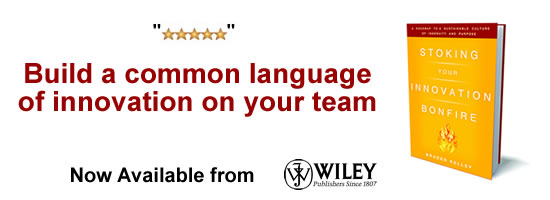Why You Need a Gremlin Group

True story.
A brilliant engineer, one of the smartest people I’ve met, was confident that his 6-year old daughter would win the annual school science contest called the Great Egg-Drop Challenge. As the name implies, the challenge was to design a package that would protect a raw egg from breaking when dropped from the school roof.
The reason he was so confident? He was a flight systems engineer — literally a rocket scientist — for NASA’s Jet Propulsion Laboratory (JPL). The Egg-Drop Challenge wasn’t all that different from the kinds of problems JPL grappled with in their own projects. For example, how to land a spacecraft safely on Mars without damage.
While he had the answer in a snap, he couldn’t just hand the solution to his daughter. So he coached and guided her in a Socratic way to arrive at the same solution, which involved a milk carton stuffed with newspaper.
Together they cut up newspaper, wadded it in the carton, put the uncooked egg in a plastic bag and set it on top of the loose packing. They tested it several times off their home’s high balcony to find just the right amount of padding to allow the egg to land untracked.
The whole school gathered for the event. However, the regular judge and chief tester — the science teacher — was not feeling well that day, and was unable to fulfill his duties. Stepping in for him was the school principal, who tested the designs not by dropping them straight down as was the usual method, but by tossing them underhand up and out in big, high, looping arc.
Needless to say, our JPL engineer’s daughter’s egg was crushed, as was his daughter’s morale. He realized a valuable lesson from the kindergarten experience, and applied it to his own space missions: inevitable, unforeseen and disruptive forces could be the ruin of any project, and there had to be a way to mitigate their potential impact.
Enter what I call the “Gremlin†strategy. Allow me to explain.
The term “Gremlin†was popularized during World War II, and referred to an imaginary creature that creates problems in normally reliable hardware.
And, in space projects, it’s the job of someone called the fault protection engineer to look at possible failures of the spacecraft, understand how to recognize them, how the spacecraft would react, and what the consequences might be. But the focus of the job is on “what is true now,†rather than “what must be true†for things to go as planned.
With the kindergarten experience fresh in his memory, the JPL engineer mashed up the two concepts to take the fault protection engineer position to the next level…the “Gremlin” level. The new job was almost cruel and evil: dream up all sorts of challenges to throw at a project team. A good Gremlin regularly ruffles feathers, often going so far as to come in at night while the project team is asleep and mess with the spacecraft or booby-trap supporting equipment. The task is to conjure up ways to take the team by surprise, with an ultimate goal of building in agility.
Take one of JPL’s most successful projects, Mars Pathfinder, for example. In the final preparation phase utilizing a sandy, rocky, imitation-Mars environment, the team was to test the ability of the Pathfinder’s little terrain rover to drive off the landing module ramps onto the surface of Mars. There were two ramps, one in front and one in back of the landing module. From the control room, which utilized stereo 3D-view cameras to monitor the testing area, everything looked good, and the team was all set to drive the rover down the front ramp.
Ignoring the words of warning issued by the project manager to do a last minute check of everything, the team declined, certain they had analyzed the situation thoroughly, and were ready to roll.
Except…the Gremlin had come in during the night, and had created a challenge: he had spent the night before building a mound of sand in front of the lander, and creating a pit behind it. The rover team recognized the real danger of driving off the front ramp, leaving the rover to negotiate down a quite steep sandy hill on which it would have little traction. That meant they had to use the rear ramp.
You see, the Gremlin had discovered a software glitch in the program used to gauge the steepness of the landing ramps. The glitch produced incorrect and misleading data, which in turn made the team think the ramp was shallow enough of an incline for the rover vehicle to use.
The team had run their normal calibration checks, which actually had shown something wasn’t right. Yet the team shrugged it off, confident that they’d be able to execute the test as planned. They were unprepared for the sand trap. The Gremlin’s point was made. Luckily it was made in a test environment.
I see this attitude all the time in my role as a strategy advisor. Only it happens in the throes of implementation, when it’s often too late to pivot with any agility.
JPL’s Gremlin strategy has been extremely effective in enabling project teams to learn how to ferret out and deal with uncertainties in a way that positively neutralizes disruptive forces. It has produced a level of resilience and agility most business teams can only dream of.
The application of a Gremlin-like approach to business should be clear. If you have a successful business, the chances are very good that somewhere someone or someones are dreaming up strategies that may just throw your business for a loop.
So why not beat them to the punch?
Take a page from the Mars Pathfinder story and set up a Gremlin group in your company. Charge them with putting you out of business in new and innovative ways. The goal is not to break or undo anything that’s working well, it’s come at the business problem you’re trying to solve from an entirely different perspective. Done right, it will not only ward off disruption, it will build bolster long-term innovation capability in your organization.
I recently worked with one company to set up a Gremlin group, and it has resulted in some brilliant strategies…radically innovative concepts I doubt would have ever materialized otherwise. I designed it to be a 12-week rotation through which selected cohorts would essentially engage in an accelerator/incubator-type experience, complete with gates and milestones and an exit strategy.
It’s become a coveted assignment, even though it’s temporary, with a significant waitlist of people wishing to audition. (Yes, you read that right — acceptance is based on “auditions” rather than rank, tenure, or even experience.). In fact, it’s a great place for recent hires, after they familiarize themselves with the company but before they stop asking, “why do we do it that way?†And on an ongoing basis it’s a great place for the “lunatic fringe†ranks of the company to flourish.
What’s amazing to me is the level of passion, verve and vigor I see inside the Gremlin teams. The level of engagement is a full click above their engagement in their “real job.†I’m not quite sure I can draw an intelligent or meaningful conclusion about corporate cultures from this, because I simply don’t have enough evidence (yet). But the early indications are that this may be a wonderful new wrinkle to the trend toward internal innovation and startup mechanisms like incubators and accelerators, which have by and large replaced the old school “skunkworks†approaches.
It certainly worked for the Mars Pathfinder team: a successful template for innovation resulted, and the entire project from concept to touchdown was completed in 44 months, and they did it for less than it cost to produce the huge Hollywood blockbuster “Titanic.â€
So, if the word “disruption†is being uttered in the halls of your company (as it seems to be almost every firm I visit), gather ye Gremlins, and go to work!
Wait! Before you go…
Choose how you want the latest innovation content delivered to you:
- Daily — RSS Feed — Email — Twitter — Facebook — Linkedin Today
- Weekly — Email Newsletter — Free Magazine — Linkedin Group
 Matthew E. May is the author, most recently, of Winning the Brain Game: Fixing the 7 Fatal Flaws of Thinking.
Matthew E. May is the author, most recently, of Winning the Brain Game: Fixing the 7 Fatal Flaws of Thinking.
NEVER MISS ANOTHER NEWSLETTER!
LATEST BLOGS
How To Stay Connected to Your Co-Workers as a Digital Nomad
The digital nomad lifestyle has grown dramatically in recent years. The number of digital nomads has increased by 42%…
Read MoreCarbon neutrality: what is it, how to achieve it and why you should care
When sustainability is on the agenda, you’re likely to hear many terms mentioned that you may or may not be…
Read More


